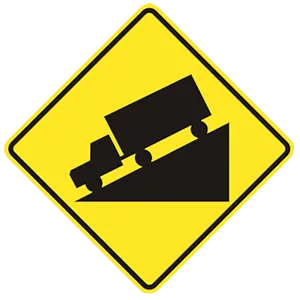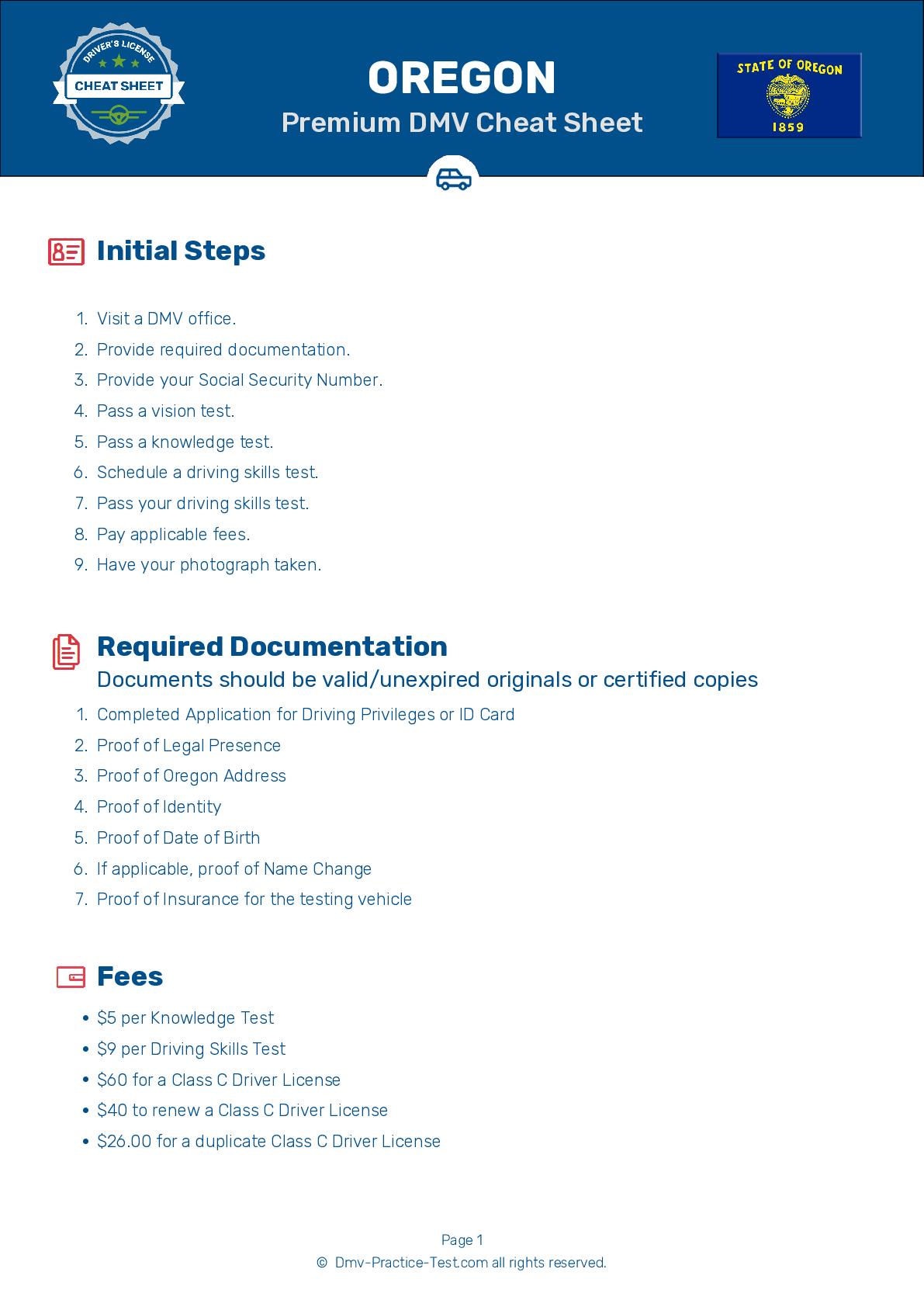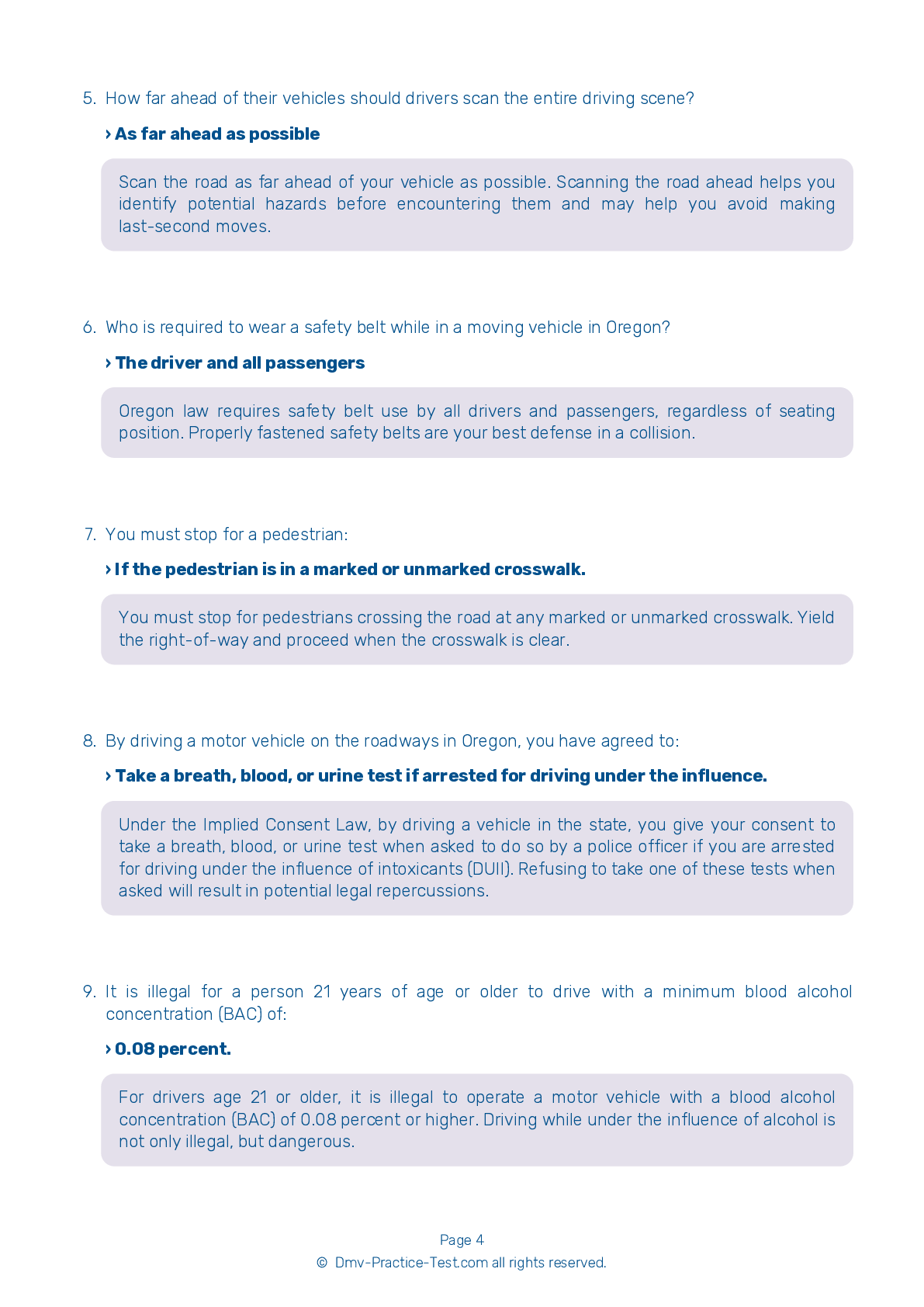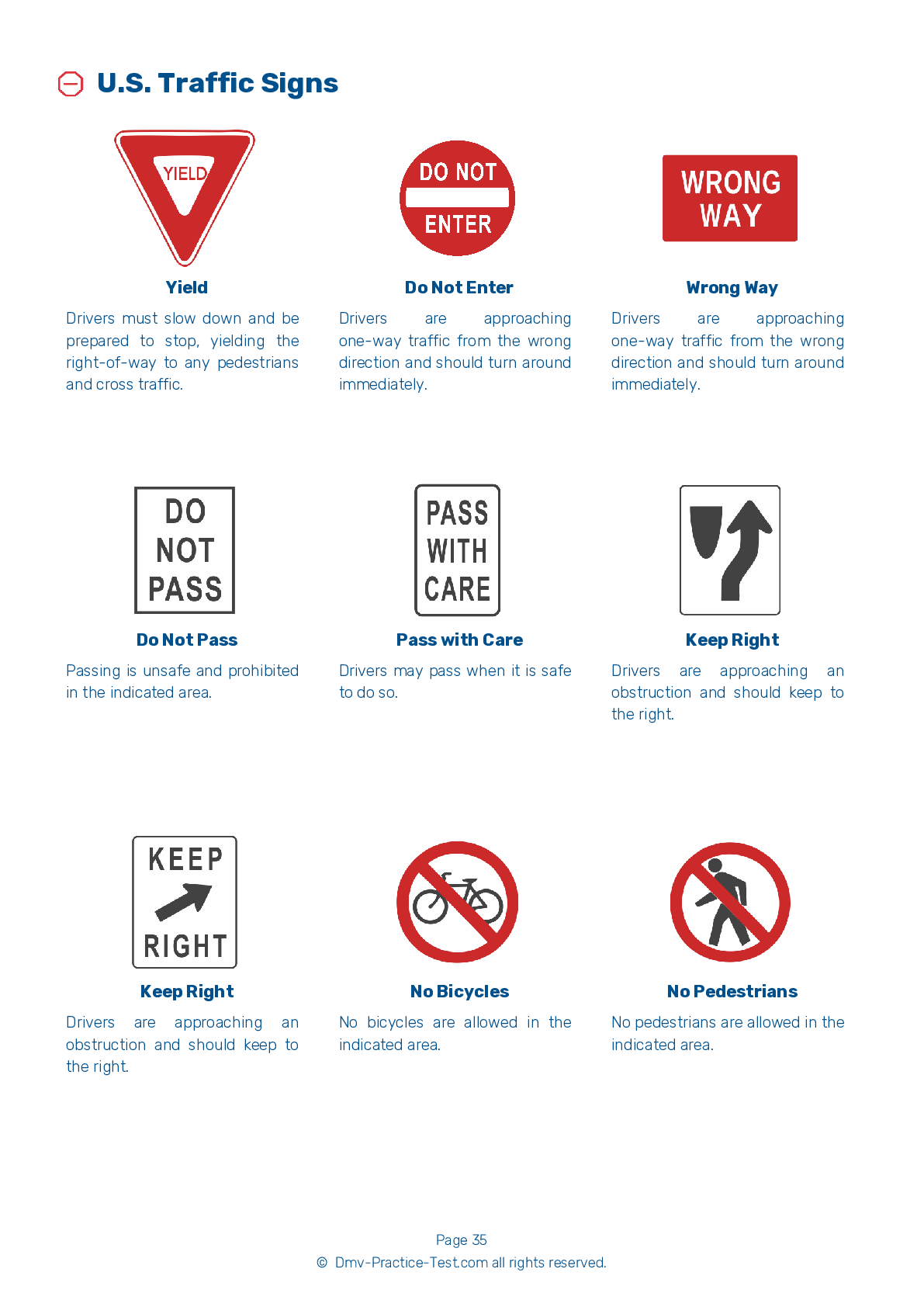FREE Oregon DMV Practice Test #8 Page 4 of 5
The practise exams for the Oregon DMV have been updated for January 2024. It includes questions based on the most important traffic signals and regulations for 2024 from the Oregon Driver Handbook. To study for the DMV driving permit test and driver's licence exam, use actual questions that are very similar (often identical!) to the DMV driving permit test and driver's licence exam.
Each question on the practise exam has a tip and explanation to help you recall the ideas. Questions about traffic rules, traffic signs, and driving statutes, as well as knowledge from the Driver Handbook, will be included in the written portion of the official Oregon DMV test.
You must properly answer 28 of the 35 questions to receive a passing mark. Use the Oregon Department of Motor Vehicles' practise exam to help you prepare for your instruction permit or driver's licence.
The DMV exam is offered in a variety of languages.
Using any form of testing help will result in an automatic fail, and the DMV may take further action against your driver's licence, so avoid it.
22 . You are driving on a busy street and your vehicle’s accelerator sticks open. You should:
If your vehicle’s accelerator sticks open, your vehicle will continue to maintain its speed or accelerate, even if you remove your foot from the gas pedal. Turn off the ignition, using care to move the ignition switch only far enough to stop the engine and not engage the steering wheel locking mechanism. Apply your brakes and move off the road to a safe area.
23 . When is it illegal to drive below the speed limit?
It is illegal to drive so slowly that you disrupt the normal flow of traffic. You may receive a citation for driving too slowly.
24 . What will happen if you crash and you do not have liability insurance?
If you are involved in a crash and do not have the proper insurance coverage, your license will be suspended for one year.
25 . This road sign means:

This sign indicates that a steep downhill grade is ahead.
26 . Oregon has an Implied Consent Law, which means that by driving a motor vehicle in the state, you have agreed that you will:
Under the Implied Consent Law, by driving a vehicle in the state, you give your consent to take a breath, blood, or urine test when asked to do so by a police officer if you are arrested for driving under the influence of intoxicants (DUII).
27 . If two vehicles arrive to a four-way stop at the same time:
In general, vehicles at a four-way stop should proceed in the order that they arrive. However, if two vehicles arrive to the intersection at the same time, the vehicle on the left must yield the right-of-way to the vehicle on the right.
28 . When driving near a blind pedestrian who is carrying a white cane or using a guide dog, you should:
When driving near a blind pedestrian who is carrying a white cane or walking with a guide dog, you must slow down, yield the right-of-way, and then proceed with caution. Be prepared to stop your vehicle in order to prevent injury or danger to the pedestrian.
See the exact questions that will be on the 2024 Oregon DMV exam.
99.2% of people who use the cheat sheet pass the FIRST TIME
LT gives us an insight on how the cheat sheet provided her with all the study questions she needed before taking her test.
Joe initially studied with the handbook and failed his test, he eventually found us online, studied and pass his test the first time around.



